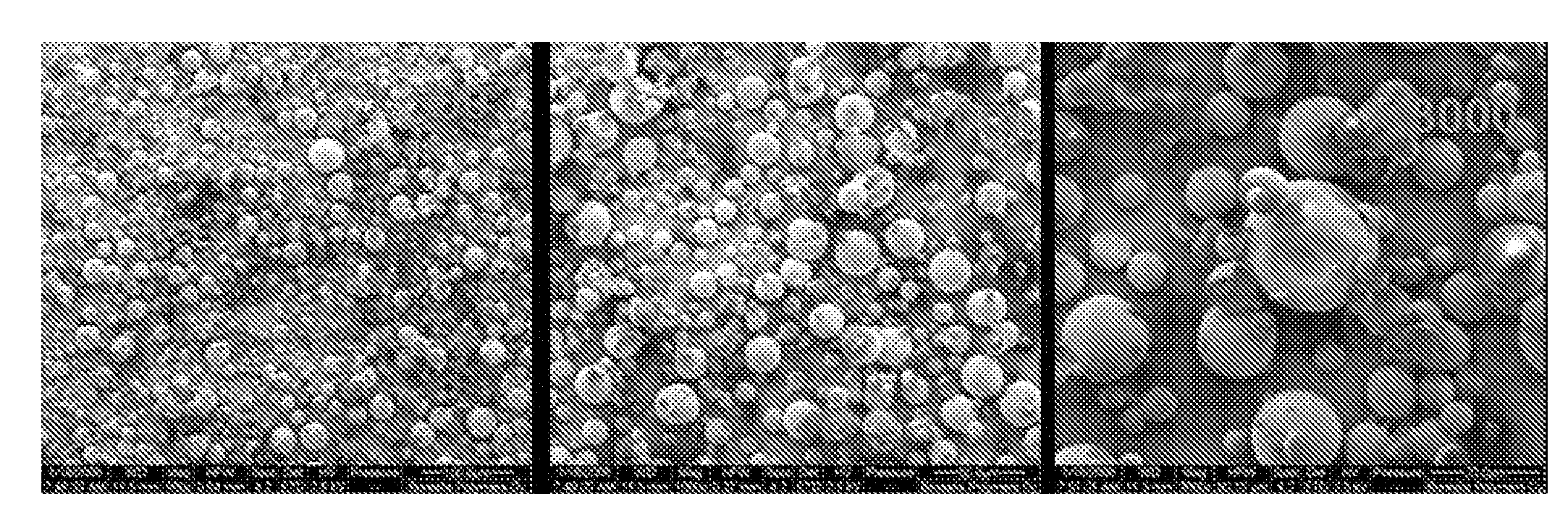Process for the preparation of an unsupported, solid metallocene catalyst system and its use in polymerization of olefins
a solid metallocene catalyst and unsupported technology, applied in the field of preparation of olefin polymers, can solve the problems of increased cost of external support, catalyst leaching, and high cost of preolymerization on a commercial scal
- Summary
- Abstract
- Description
- Claims
- Application Information
AI Technical Summary
Benefits of technology
Problems solved by technology
Method used
Image
Examples
example 1
Octamethyltrisiloxane Clatherated MAO
Complex Preparation
[0157]The metallocene complex rac-ethylenebis[2-(tert-butyldimethylsiloxy)indenyl]zirconium dichloride (176 mg, prepared according to Leino, R. et al. Organometallics 1996, 15, 2450) was weighed in a septa bottle and subsequently admixed with methylaluminoxane (13.2 g, 30 wt % MAO in toluene, 13.78 wt % Al, supplied by Albemarle). The solution was stirred for 60 minutes at room temperature, after which octamethyltrisiloxane (OMTS) (0.80 g) was added to the reaction mixture and stirred the solution overnight at room temperature. Stirring was then stopped, two separate phases formed. The upper, colourless phase was discarded, whilst the lower orange / yellow phase was washed with toluene (2 times, 5 ml).
Emulsion Formation
[0158]150 ml of toluene saturated (previously saturated at 0° C.) perfluoro-1,3-dimethylcyclohexane (94%, F2 Chemicals Ltd) were added to a baffled glass reactor with rotostator stirrer and cooled to 0° C. The roto...
example 2
KCl Clatherated MAO
[0162]Example 2 was prepared according to Example 1, but KCl (0.51 g, 99.5% Merck) was added in place of octamethyltrisiloxane, resulting in a pale yellow solid.
[0163]Molar ratios: Al:Zr=260:1; Al:K=10:1
example 3
Methyltrioctylammonium Chloride Clatherated MAO
[0164]Example 3 was prepared according to Example 1, but methyltrioctylammonium (MTOA) chloride (1.36 g, Fluka) was added in place of octamethyltrisiloxane, resulting in a yellow solid.
[0165]Molar ratios: Al:Zr=260:1; Al:MTOA=20:1
PUM
| Property | Measurement | Unit |
|---|---|---|
| solvent | aaaaa | aaaaa |
| molar ratio | aaaaa | aaaaa |
| temperature | aaaaa | aaaaa |
Abstract
Description
Claims
Application Information
 Login to View More
Login to View More - R&D
- Intellectual Property
- Life Sciences
- Materials
- Tech Scout
- Unparalleled Data Quality
- Higher Quality Content
- 60% Fewer Hallucinations
Browse by: Latest US Patents, China's latest patents, Technical Efficacy Thesaurus, Application Domain, Technology Topic, Popular Technical Reports.
© 2025 PatSnap. All rights reserved.Legal|Privacy policy|Modern Slavery Act Transparency Statement|Sitemap|About US| Contact US: help@patsnap.com



